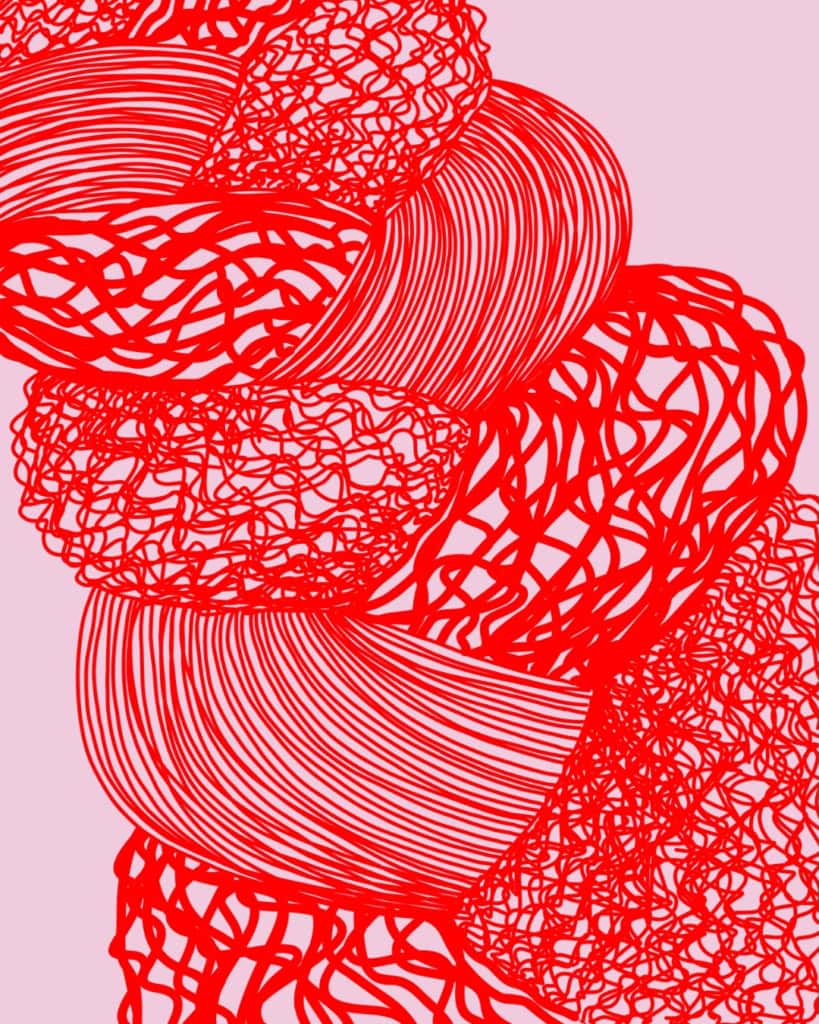This legacy of our ancestors accompanies us in every cell of our body, in the neurons of our brain, in the fibers of our muscles, in our heart.
What does this bond do to us? Why do we find it so difficult to separate from each other?
And is it perhaps a generational task for every woman to detach herself from this invisible rubber band, knowing full well that the connection remains nonetheless?
The mtDNA is unique. It is passed on exclusively via the mother, while the DNA from cell nuclei originates from both parents.
Our mitochondrial succession is an ancient thread that connects us to the women who came before us. A connection that we often only feel when it challenges us: in the separation from our mother, in the conflicts with our daughter, in the silent understanding between grandmothers and granddaughters.
It's a paradox: the further we move away, the stronger the force of return. Like a rubber band that snaps back.
Is it up to all of us to give this volume more meaning than we do?
Research by Rebecca Cann, Mark Stoneking and Allan Wilson in the 1980s showed that all humans can be traced back to a common ancestor: the mitochondrial Eve.
A single woman who lived around 150,000 to 200,000 years ago and whose mitochondrial DNA persists in us to this day.
Its existence means that we are all connected, regardless of our skin color, origin or language. Although there are mutations of this DNA, which outlines conclusions about geographical and temporal locations, it basically originates from the same Mito-Mutti.
The origin of us all. A sensation for science and a deeper truth for us women: Sisterhood is not a new idea, not a mere post-feminist discourse, but our nature.
However, this connection also harbors resistance. The desire for independence, for demarcation, is as old as our genetic connection itself.
Claiming visibility in a maternal ancestral line is a right, but also a challenge.
After all, how do you find your own place when the others are already in one?
I see this pattern in my own family: the strength of my grandmother, the resilience of my mother, my own search for my own path, and now my daughter, who is asserting herself with the same determination. She carries the mtDNA of our ancestors, but she is not just the product of the past. She will follow her own path, even if it sometimes seems to lead her away from me.
Just as we belong together as FLINTA*, our mitochondrial succession also connects us. One Hundred Thousand Mothers is not just a campaign, but an expression of this deep bond. We stand together for equality, for equality - or even for a necessary betterment in order to finally achieve real equality. We need each other because we are each other. Whether we want to or not.
Let us be sisters, in all our diversity and unity at the same time.
For in all of us resonate the echoes of those who came before us - and the voices of those who will come after us.
by Türkân Deniz-Roggenbuck
